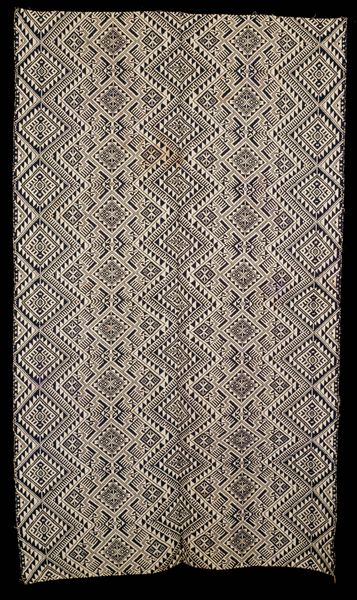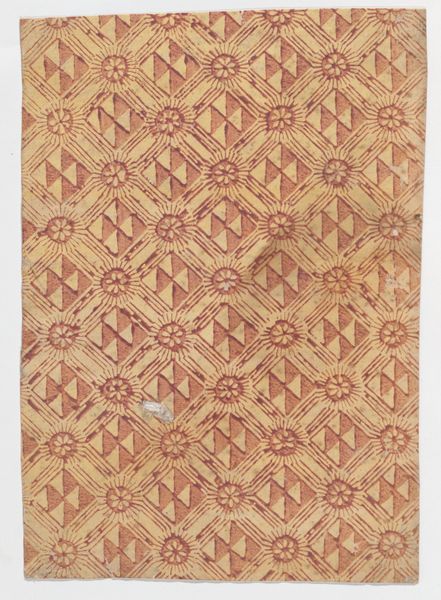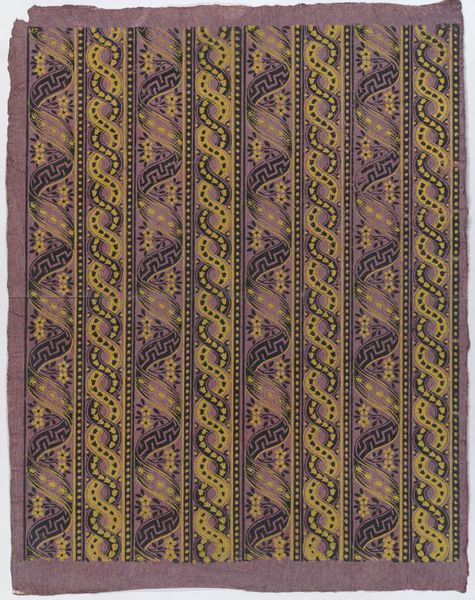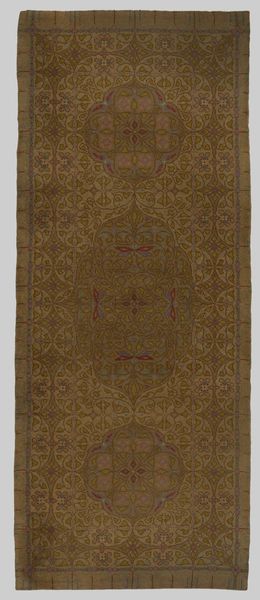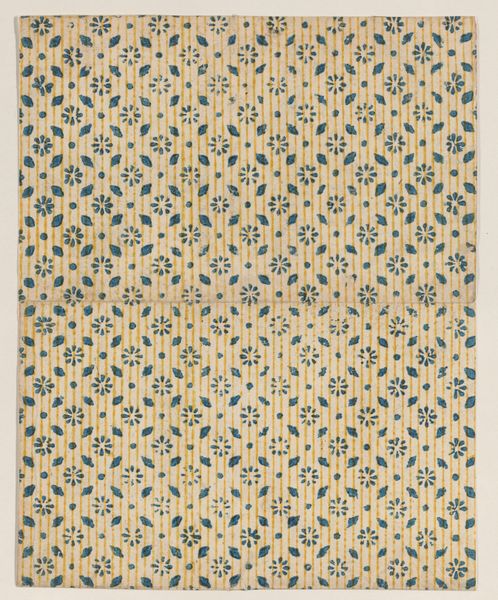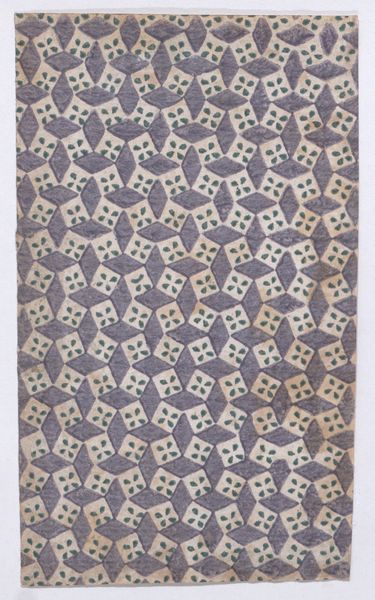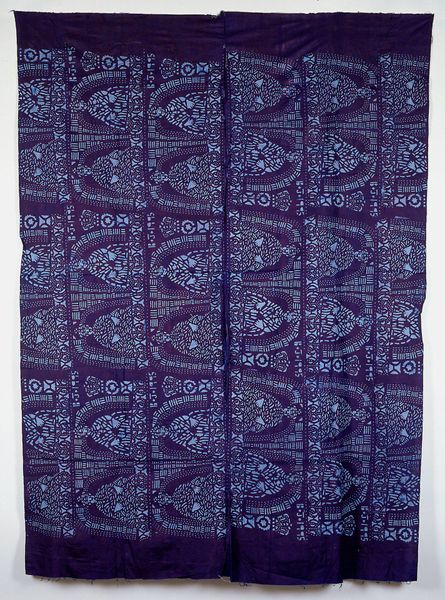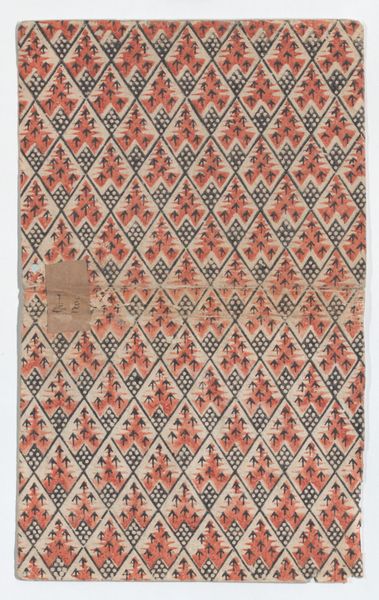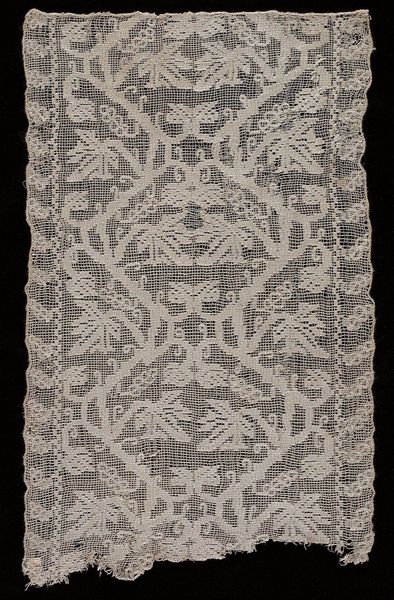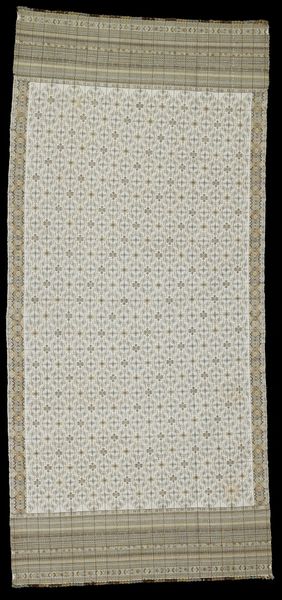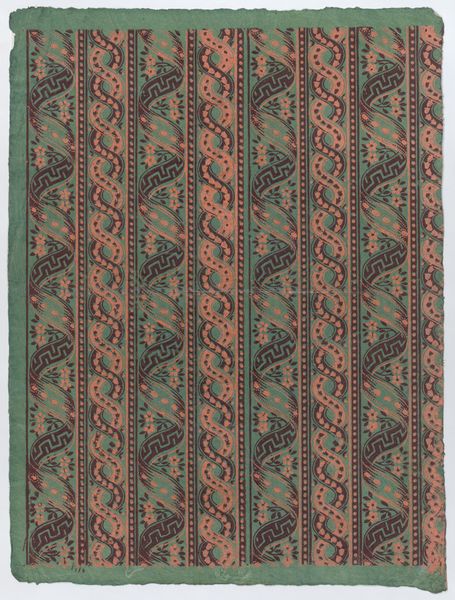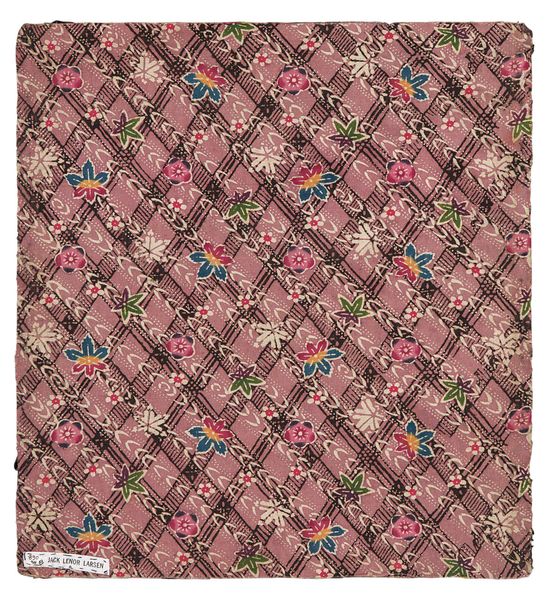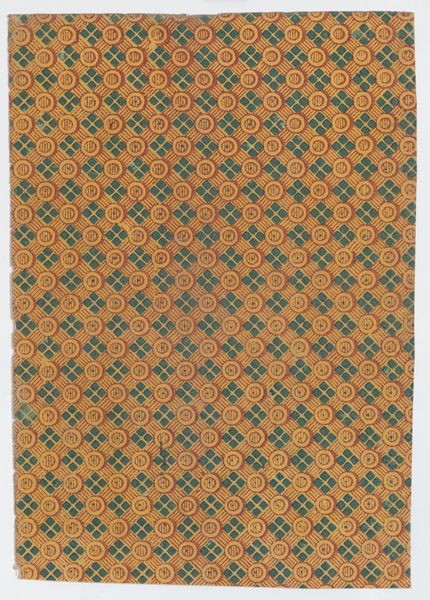
Sheet with overall floral zig zagging pattern 1775 - 1875
0:00
0:00
print, paper
#
organic
# print
#
paper
#
organic pattern
#
textile design
#
decorative-art
Dimensions: Sheet: 14 9/16 × 18 1/2 in. (37 × 47 cm)
Copyright: Public Domain
Editor: Here we have "Sheet with overall floral zig zagging pattern," dating roughly from 1775 to 1875. It's an anonymous textile design, housed here at the Met. The colours are so interesting! A kind of faded plum with ochre, and quite complex floral motifs. What's your take on it? Curator: It's fascinating to consider this piece as evidence of production and labor. Think about the textile industry during that period, the complex systems of production, possibly even exploiting colonial resources or enslaved labor. Where did the materials originate, and what were the processes necessary to yield these pigments and weave this textile? Editor: So you're focusing on the social and economic implications, not just the visual? Curator: Exactly. We must examine how the materials themselves contribute to the narrative. Is this a luxury item meant for display, or a more utilitarian fabric? The design suggests deliberate and careful craftsmanship. The zigzag patterns contain meticulously printed, organically-inspired images, which indicates a blend of mass-produced elements with handmade characteristics. Is this tension something the artist consciously manipulated, and why? Editor: That’s interesting – it's making me consider the blurred boundaries between art, craft, and industry at this time. It makes you wonder, who designed this? What were the politics surrounding it? Was this pattern used widely, or for something specific? Curator: Precisely! Its preservation also begs the question - what makes it worthy of the Met collection today? Is it merely a pattern, or can it reveal larger truths regarding production and consumption? Editor: I never would have considered approaching it from a manufacturing point of view! It certainly challenges the conventional definitions of 'art.' Curator: Indeed. By engaging with these questions, we unveil a history often overlooked in art historical analysis. It shows how daily lives are affected by artistry and material culture.
Comments
No comments
Be the first to comment and join the conversation on the ultimate creative platform.
